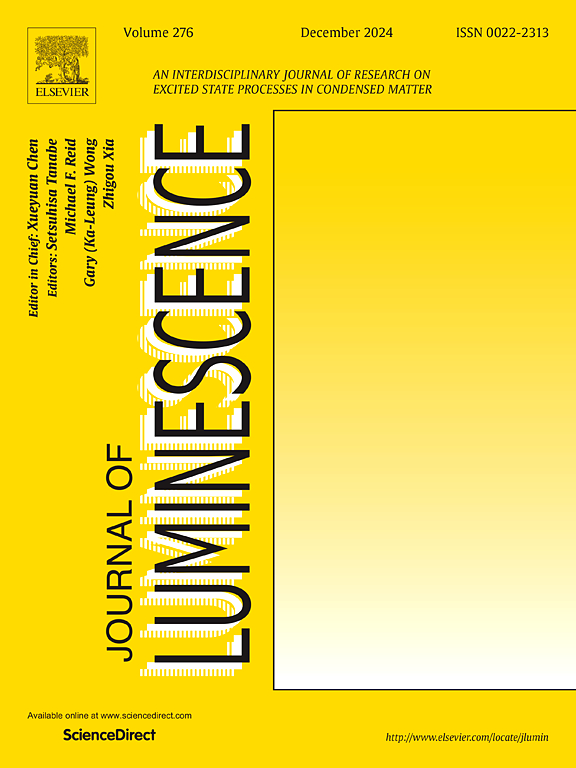荧光检测用锆基金属有机骨架的研究进展
IF 3.6
3区 物理与天体物理
Q2 OPTICS
引用次数: 0
摘要
金属有机框架(mof)由于其高表面积、结构可调性和易于修改功能位点而被广泛认为是传感材料的最佳选择。特别是,锆基mof (zr - mof)由于其优异的结晶度和无与伦比的稳定性而受到了极大的关注。基于Zr-MOFs的荧光传感器的应用得到了广泛的研究。本文综述了Zr-MOF荧光传感器的合成策略、检测机制以及在生物标志物检测、食品安全评价、环境监测等领域的实际应用等方面的研究进展。本文重点介绍了目前Zr-MOF荧光传感器研究面临的挑战,并概述了未来的研究方向,旨在为Zr-MOF荧光传感器的设计、合成和实际应用提供全面的指导。最后,本文旨在拓宽其应用范围,促进其在相关领域的关键作用。本文章由计算机程序翻译,如有差异,请以英文原文为准。

Advances in zirconium-based metal-organic frameworks for fluorescence detection
Metal-organic frameworks (MOFs) are widely acknowledged as the optimal choice for sensing materials due to their high surface area, structural tunability, and ease of modification of functional sites. In particular, zirconium-based MOFs (Zr-MOFs) have garnered significant attention owing to their exceptional crystallinity and unparalleled stability. The applications of fluorescent sensors based on Zr-MOFs have been extensively investigated. This article reviews the recent research advancements in Zr-MOF fluorescent sensors concerning synthesis strategies, detection mechanisms, and practical applications across various fields including biomarker detection, food safety assessment, environmental monitoring, among others. Furthermore, this article highlights the current challenges faced in Zr-MOF sensor research and outlines future directions aimed at providing comprehensive guidance for the design, synthesis, and practical application of Zr-MOF fluorescent sensors. Ultimately, this review seeks to broaden their scope of application and promote their pivotal role in related domains.
求助全文
通过发布文献求助,成功后即可免费获取论文全文。
去求助
来源期刊

Journal of Luminescence
物理-光学
CiteScore
6.70
自引率
13.90%
发文量
850
审稿时长
3.8 months
期刊介绍:
The purpose of the Journal of Luminescence is to provide a means of communication between scientists in different disciplines who share a common interest in the electronic excited states of molecular, ionic and covalent systems, whether crystalline, amorphous, or liquid.
We invite original papers and reviews on such subjects as: exciton and polariton dynamics, dynamics of localized excited states, energy and charge transport in ordered and disordered systems, radiative and non-radiative recombination, relaxation processes, vibronic interactions in electronic excited states, photochemistry in condensed systems, excited state resonance, double resonance, spin dynamics, selective excitation spectroscopy, hole burning, coherent processes in excited states, (e.g. coherent optical transients, photon echoes, transient gratings), multiphoton processes, optical bistability, photochromism, and new techniques for the study of excited states. This list is not intended to be exhaustive. Papers in the traditional areas of optical spectroscopy (absorption, MCD, luminescence, Raman scattering) are welcome. Papers on applications (phosphors, scintillators, electro- and cathodo-luminescence, radiography, bioimaging, solar energy, energy conversion, etc.) are also welcome if they present results of scientific, rather than only technological interest. However, papers containing purely theoretical results, not related to phenomena in the excited states, as well as papers using luminescence spectroscopy to perform routine analytical chemistry or biochemistry procedures, are outside the scope of the journal. Some exceptions will be possible at the discretion of the editors.
 求助内容:
求助内容: 应助结果提醒方式:
应助结果提醒方式:


